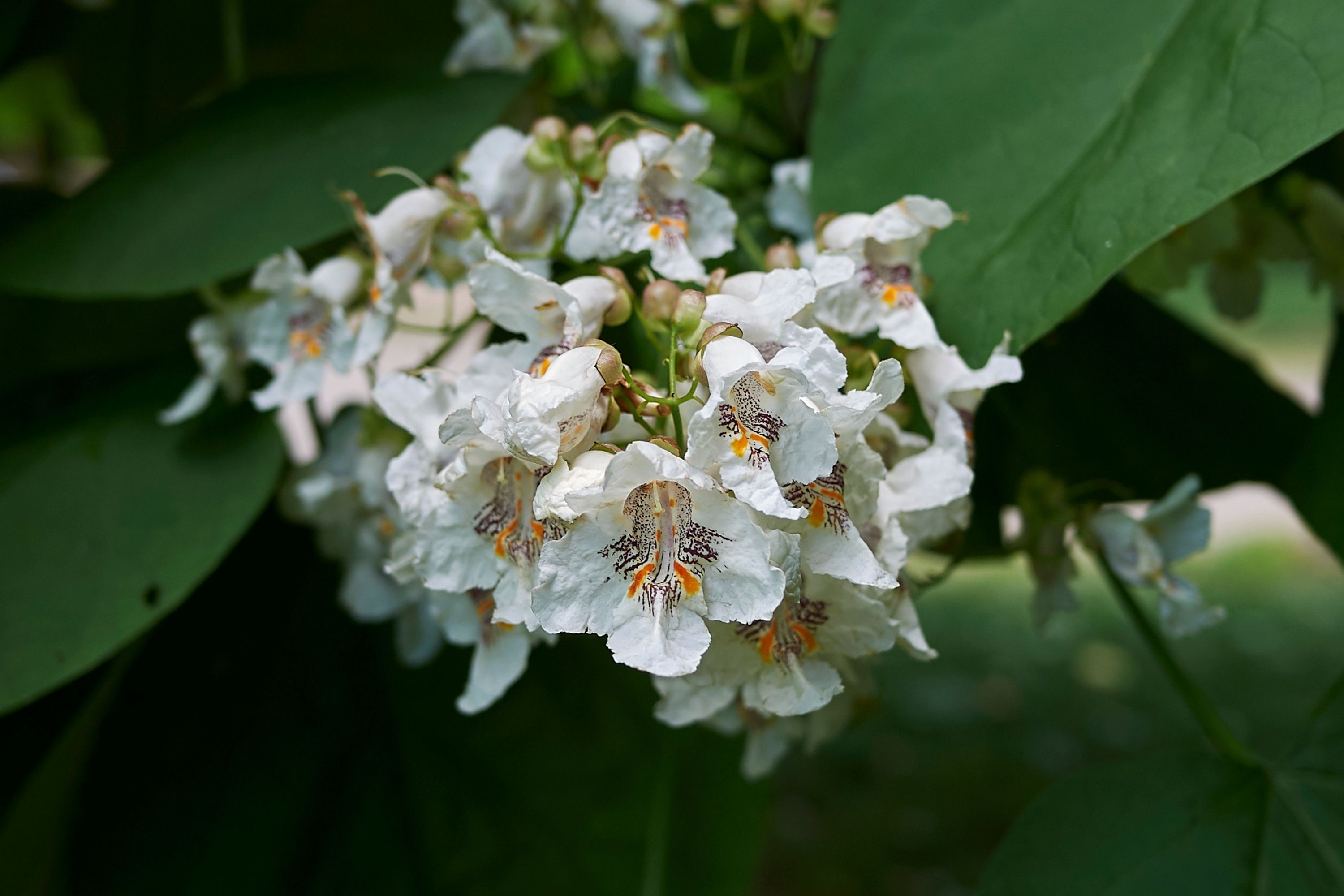Southern Catalpa
(Catalpa bignonioides)

Description
Catalpa bignonioides, commonly known as southern catalpa, is a deciduous tree that belongs to the family Bignoniaceae. The tree is native to the southeastern United States and can be found from Florida to Illinois and from the east coast to eastern Texas. Catalpa bignonioides is widely grown for its ornamental value, and it is also used for timber and medicinal purposes. In this article, we will explore the taxonomy, morphology, habitat, distribution, cultivation, and uses of Catalpa bignonioides. Taxonomy: Catalpa bignonioides was first described by French botanist Andre Michaux in 1803. The genus name, Catalpa, is derived from the Muscogee Creek word "kutuhlpa," which means "winged head." The species name, bignonioides, is derived from the Latin word "bignonia," which is a reference to another plant family, Bignoniaceae. Catalpa bignonioides is the type species for the genus Catalpa. Morphology: Catalpa bignonioides is a medium-sized tree that can grow up to 20-30 meters (65-100 feet) tall. The tree has a broad, irregularly shaped crown and a straight trunk that can reach up to 1.2 meters (4 feet) in diameter. The bark is grayish-brown, thick, and furrowed. The leaves are large, simple, and heart-shaped, measuring up to 30 cm (12 inches) long and 20 cm (8 inches) wide. The leaves are arranged in an alternate pattern on the branches and are dark green in color. The flowers are large, trumpet-shaped, and white with purple and yellow spots inside. The flowers bloom in late spring to early summer and are followed by long, narrow, bean-like pods that can reach up to 50 cm (20 inches) in length. The pods are green when young and turn brown as they mature. Each pod contains numerous flat, light brown seeds that are winged and dispersed by wind. Habitat and Distribution: Catalpa bignonioides is native to the southeastern United States and can be found from Florida to Illinois and from the east coast to eastern Texas. The tree grows in a wide range of habitats, including bottomlands, floodplains, and along rivers and streams. It prefers moist, well-drained soils but can tolerate a range of soil types, including sandy, clay, and loamy soils. Catalpa bignonioides can also tolerate a range of pH levels, from acidic to alkaline. The tree is hardy in USDA zones 5-9. Cultivation: Catalpa bignonioides is widely grown for its ornamental value. The tree is easy to grow and requires little maintenance. It prefers full sun but can tolerate partial shade. The tree is tolerant of drought, pollution, and urban conditions, making it a good choice for urban landscapes. Catalpa bignonioides is propagated by seeds or cuttings. Seeds should be planted in the fall or stratified before planting in the spring. Cuttings should be taken in the summer and rooted in a well-drained rooting medium. The tree is fast-growing and can reach maturity in 10-20 years. Uses: Catalpa bignonioides is used for a variety of purposes. The tree is valued for its ornamental value and is often planted as a shade tree or as a specimen tree in parks and gardens. The tree is also used for timber and is valued for its strong, durable wood, which is resistant to rot and decay.
Taxonomic tree:







